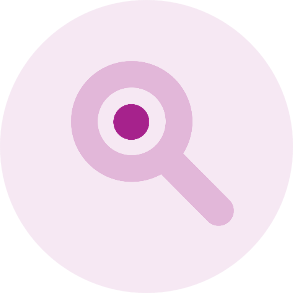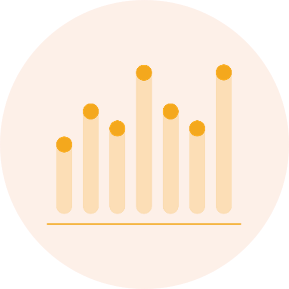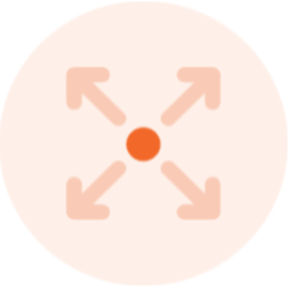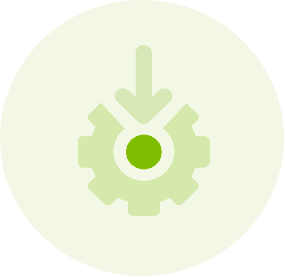Delivery dashboard
The Department of Delivery for Impact (DFI) is helping to bring a systematic, data-driven, and sustained focus on achieving WHO’s Triple Billion targets, and driving progress towards the 2030 Sustainable Development Goals (SDGs). It does so through routine tracking, facilitated problem-solving, and building capacity for effective implementation of WHO’s normative guidance and technical packages. Acting in complement to existing mechanisms and enabling functions across all three levels of the WHO, DFI created a common framework (ACDBE) which is used as a systematized approach for tracking progress towards achievement of the SDGs/Triple Billion targets across the three levels of the Organization.
The Delivery Dashboard is a tool that visually represents WHO's progress towards SDGs/Triple Billion targets, using simple traffic-light symbols. At the global level, it can be used to track select priority activities of WHO in support of Member States to drive impact on SDG outcomes. At the country level, it can be adapted to track the progress of the WHO Country Office’s specific priorities.
The purpose of the Delivery Dashboard is to streamline the Organizational effort to accelerate the progress towards the Triple Billion Targets and achieve measurable impact in the lives of the people we serve.
Key concepts of the Delivery dashboard

Milestone
WHO’s statement on proposed health priority area which formulates where and how the organization plans to
support countries to drive impact, as defined by the relevant technical program and leadership. Milestones
represent a joint accountability and constructive collaboration with member states.

Acceleration scenarios
Projected acceleration relative to current trends to achieve or come closer to achieving the global SDG and GPW targets.

Countries/
Communities for acceleration
List of the high burden/high-impact countries/communities that WHO identifies and agrees across all levels as priorities for intervention.

Delivery plan for implementation agreed
Delineation of the most effective interventions WHO can support to be implemented to accelerate progress in countries in a given timeframe.

Delivery plan costed
& financed
Assessing whether the WHO delivery plan costed and prioritized across levels to capacitate delivery on the milestone in the priority countries/ communities.

Execution, tracking, and problem solving
Including accountability routines for regular progress tracking, problem solving, and course-correction towards achieving the milestone
Criteria and color-coding for progress tracking on the delivery dashboard
| Acceleration scenario* | Complete | In progress – On track | In progress – at risk | High-risks | Not started |
| Acceleration towards SDG (or similar) target is on track for all priority countries | Globally SDG (or similar) target acceleration is within 10% of SDG target including for all WHO priority countries | Globally SDG (or similar) target acceleration is within 10% target however the gap is greater in some or all of the WHO priority countries | WHO Priority countries are not on track to achieve SDG target by 2030 OR No agreed global target for acceleration | No agreed global target for acceleration | |
| Countries/ Communities identified for acceleration | Complete | In progress – On track | In progress – at risk | High-risks | Not started |
| Priority countries determined and engaged with region and global to deliver impact. | Priority countries are proposed and WHO 3L consultation for agreement is ongoing | There is interest to identify countries, but there is not yet consultation or agreement across WHO 3L | There is insufficient data/ bandwidth to identify priority countries | No work started | |
| Delivery plan developed | Complete | In progress – On track | In progress – at risk | High-risks | Not started |
| Delivery plans are developed for all countries | Delivery plans are developed for select priority countries | Technical packages exist, but there are no specific actions for each priority country | Critical risks for developing delivery plans and no solutions identified | No work started | |
| Delivery plan costed and financed (nb/ to be deferred from dashboard update 2024 WHA edition) | Complete | In progress – On track | In progress – at risk | High-risks | Not started |
WHO budget is fully funded
AND
Resource mobilization or Member State investment is in place
| Operational budget: funding indicates little or no gap
AND Resource mobilization is in process, on track for any persistent gaps or additional needs | Resources included in operational budget at global, regional and for priority countries but marked funding gap persists | Critical resource gaps present
OR Absence of designated budget space for priority countries | No work started | |
| Execution, tacking, and problemsolving | Complete | In progress – On track | In progress – at risk | High-risks | Not started |
| Strong infrastructure in place to sustain change | A monitoring platform is available to track the agreed M&E process | An M&E process is defined and agreed across all three levels | No mechanism for tracking progress and problem-solving | No work started | |
* Acceleration scenarios offer a quantitative picture of the change required and represent the shared responsibility of Member States, stakeholders and WHO.
Policy implementation indicators do not often have a rate of change for the global milestone and only require a target year plus a defined list of countries for the acceleration scenario step. Calculations can also be made to add a target based on the expected rate of change in the indicator if policies are fully implemented in selected countries.
